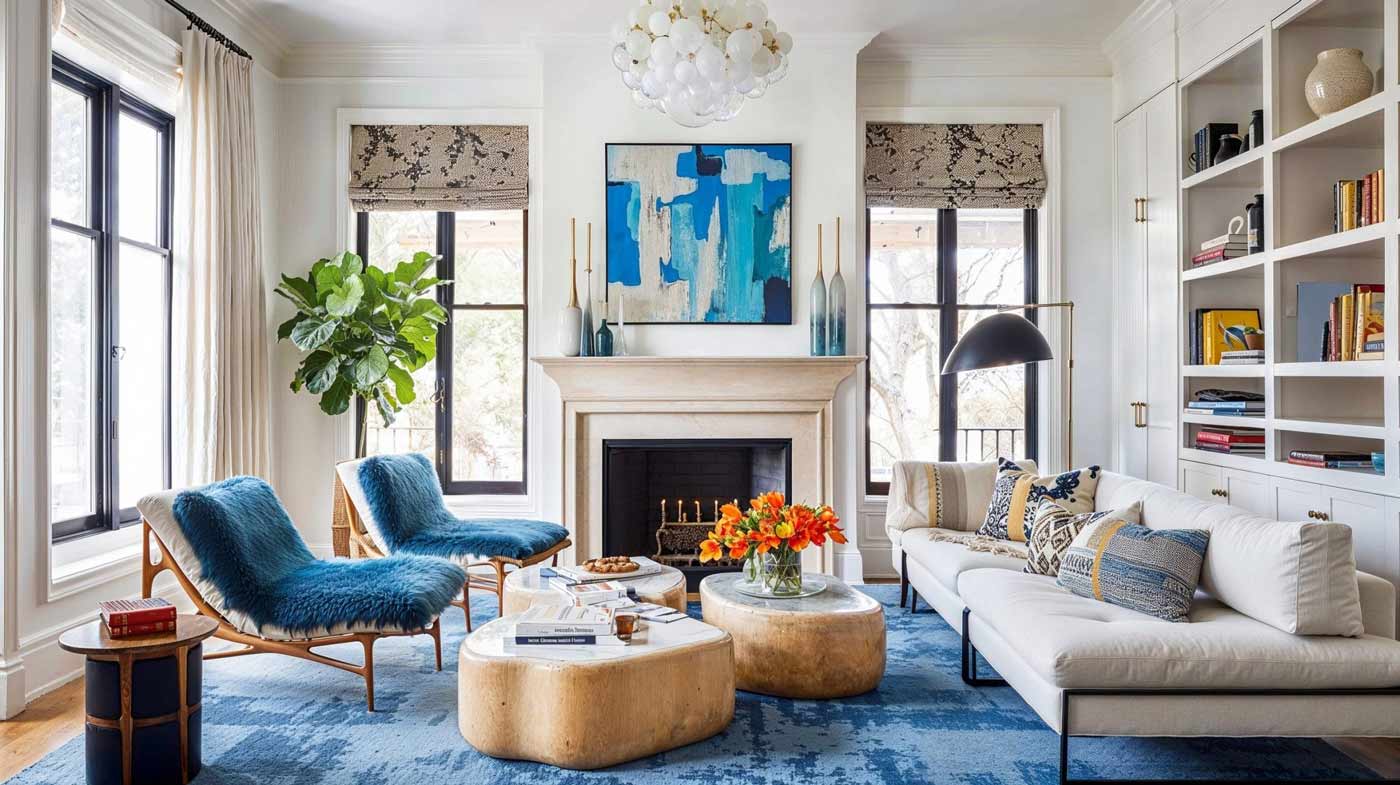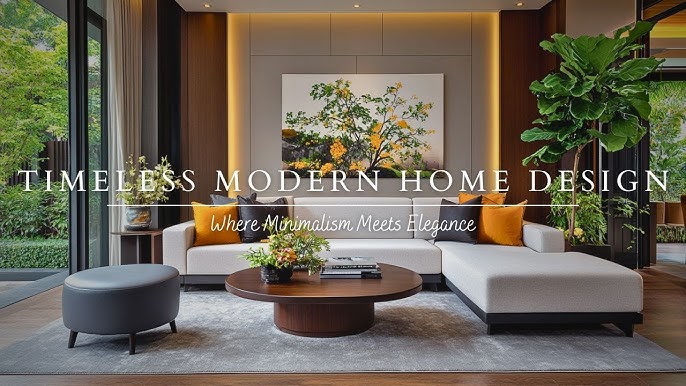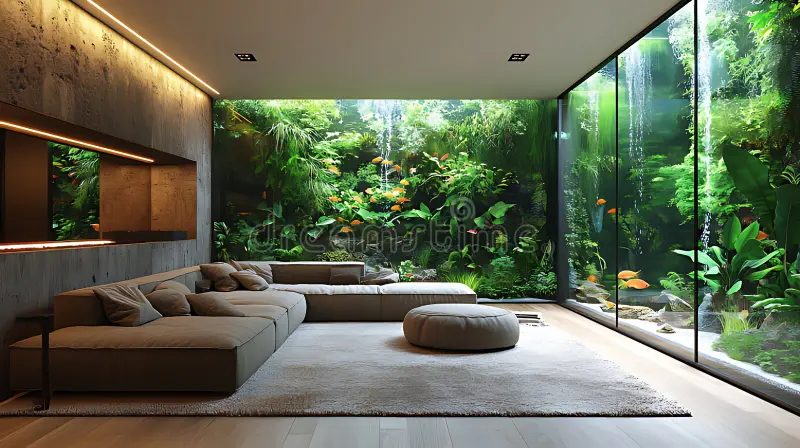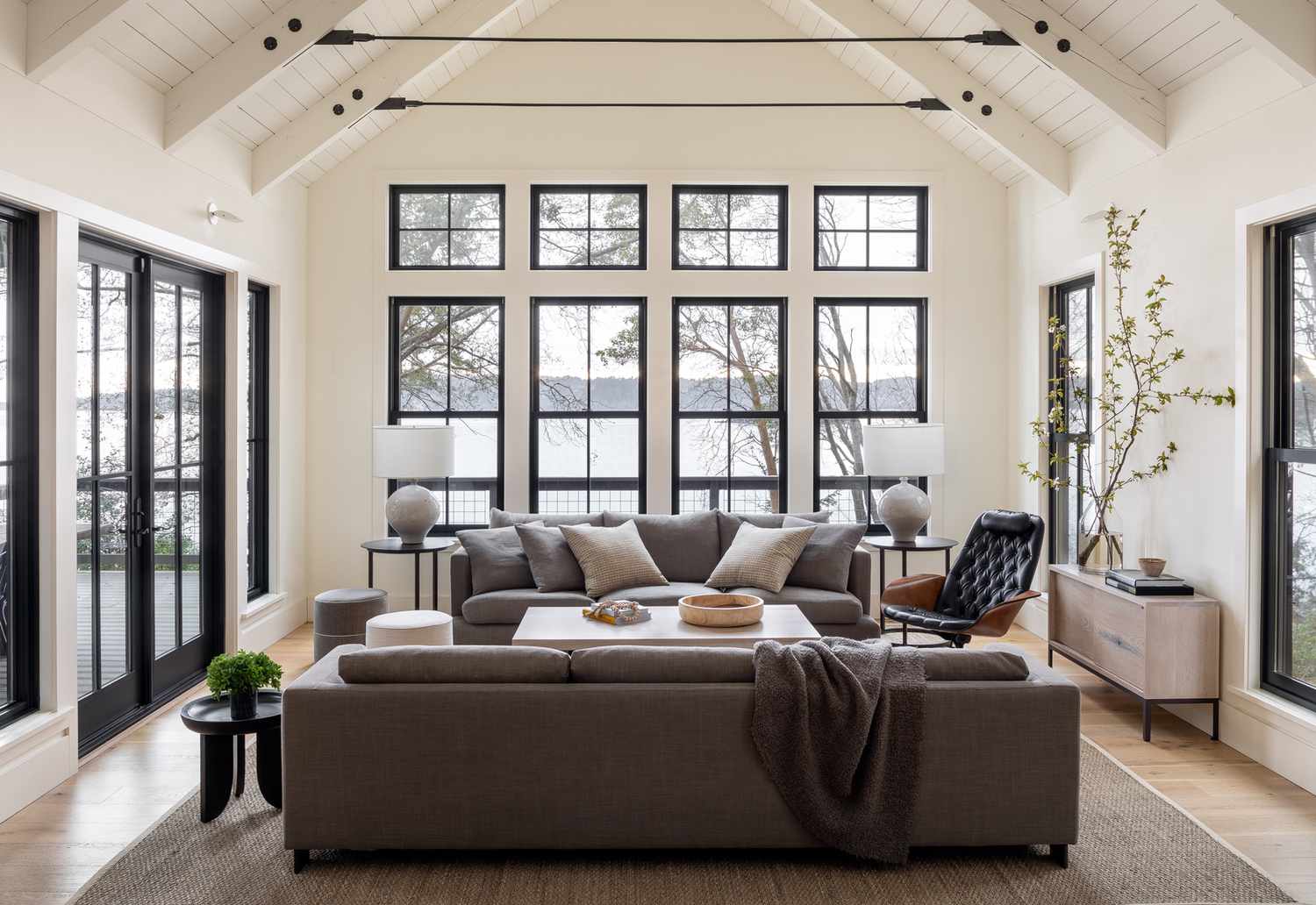Effortless Elegance: Curating a Comfortable and Stylish Home with Timeless Furnishings
Understanding the Power of Furnishings in Home Identity
Every home tells a story. While walls and roofs provide the structure, it’s the furnishings that breathe soul into a space. Home furnishing is more than arranging sofas or choosing throw pillows—it’s about creating harmony, expressing your personal taste, and designing a lifestyle that aligns with your daily needs.
The Emotional Core of Home Furnishing
Furnishings are deeply emotional. The chair you love reading in, the dining table that has seen family dinners and birthday cakes, the lamp beside your bed—all play roles far beyond their function. These items are memories in form, function, and fabric. This is why creating a space that’s both stylish and emotionally resonant is the key to truly successful furnishing.
By focusing on intentional design, you transform your space into a sanctuary, not just a showroom. The goal is not just visual elegance, but effortless comfort that feels timeless year after year.
Designing with Purpose: Principles Behind Elegant Furnishing
Before diving into colors and fabrics, consider the core principles of great home furnishing:
-
Balance: A well-balanced room feels peaceful. This means using symmetry or asymmetry thoughtfully—perhaps two matching chairs or a bookshelf that balances a large sofa.
-
Proportion and Scale: Choose furniture that fits your space. Oversized pieces in a small room make it feel cramped; too-small pieces make a large room feel empty.
-
Rhythm and Repetition: Repeating elements like wood tones, color palettes, or textiles creates a cohesive flow across rooms.
-
Focal Point Creation: Whether it’s a fireplace, a bold couch, or a feature wall, every room should have one element that draws the eye.
These principles help guide decisions while keeping your overall aesthetic polished and comfortable.

Home Furnishing
Choosing the Right Foundation Pieces
Foundational pieces—sofas, dining tables, beds, armchairs—anchor a space. They’re also the investment pieces where quality matters most.
Sofas and Seating
A sofa is not just a place to sit—it’s where conversations happen, naps are taken, and Netflix marathons begin. When choosing a sofa:
-
Opt for timeless designs like mid-century modern, Chesterfield, or clean-lined contemporary.
-
Neutral tones in greys, creams, or browns offer versatility and longevity.
-
Look for durable fabrics like linen blends, performance velvet, or high-end synthetics for longevity.
Pair it with accent chairs or loveseats that echo the same design language but add a twist—perhaps a splash of color or an unexpected material like rattan or boucle.
Dining Tables as Social Anchors
In modern living, dining tables are more than a place to eat—they’re where families connect. Whether you opt for solid wood, glass, or ceramic-topped tables, ensure:
-
It fits your lifestyle (expandable for guests, or round for tight spaces).
-
Matches your chairs without being too “matchy-matchy.”
-
Offers both aesthetic and functional strength.
Backlink: Architectural Digest’s Dining Room Furniture Guide (2025)
Textiles and Soft Layers: The Secret to Depth and Comfort
Furnishings go beyond hard surfaces. Fabrics create softness, texture, and mood. Consider:
Curtains and Drapes
Opt for natural fabrics like cotton, linen, or silk blends in solid hues or subtle patterns. Floor-to-ceiling drapes add luxury while enhancing the sense of height in a room.
Throw Pillows and Blankets
These are where you can play with color and pattern. Keep your base furniture neutral and rotate these accessories seasonally for a fresh look without overhauling the space.
Rugs for Cohesion
Rugs visually connect furniture and add warmth. For the living room:
-
A large area rug should be big enough for all front legs of the furniture to rest on.
-
Choose patterns or neutral weaves that support the room’s palette rather than dominate it.
-

modern-living-rooms full furnish
Storage Solutions that Blend Function and Form
Clutter undermines elegance. Stylish storage can make your home look curated instead of chaotic.
Storage Ottomans and Benches
Great for entryways, foot-of-bed setups, or living rooms. They offer hidden storage without sacrificing style.
Bookshelves and Built-ins
If you have space, built-in bookshelves offer tailored elegance. If not, freestanding modular shelves in metal or wood can provide vertical storage and display space.
Media Consoles
Choose consoles that hide cables and offer drawer storage. Modern designs include cord management systems and adjustable shelves—ideal for mixing tech with timeless decor.
Two Timeless Home Furnishing Palettes for 2025
| Palette Theme | Primary Colors | Accent Materials | Ideal Rooms |
|---|---|---|---|
| Earth & Stone | Sand, clay, warm taupe | Woven rattan, terracotta | Living room, bedroom |
| Modern Coastal | Soft whites, ocean blue | Driftwood, brushed nickel | Bathroom, sunroom, foyer |
These palettes not only feel modern but age beautifully. They work across different furniture styles—from Scandinavian to transitional—making them a favorite of interior designers in 2025.
Investing in Quality Over Quantity
A growing design philosophy is “fewer, better things.” Instead of buying trendy furniture that will wear out or go out of style, focus on pieces with:
-
Solid construction
-
High-quality materials (oak, walnut, metal frames)
-
Replaceable parts or reupholstery options
This approach is not only sustainable but creates a home that ages with grace.
Lighting: The Unsung Hero of Furnishing Design
Furniture placement and selection mean little without the right lighting to support them. Lighting defines mood, accentuates textures, and reveals the subtle beauty of materials. In 2025, designers emphasize layered lighting as the secret to a cohesive, comfortable space.
Three Layers of Lighting Every Room Needs
-
Ambient Lighting: General lighting that illuminates the entire space. Think ceiling-mounted fixtures, recessed lights, or chandeliers.
-
Task Lighting: Lighting for specific activities—reading, cooking, writing. Desk lamps, under-cabinet lights, and swing-arm wall lamps are perfect here.
-
Accent Lighting: The final polish. Use spotlights or wall sconces to highlight artwork, architectural features, or your favorite furnishings.
A well-furnished space uses lighting to spotlight intentional design choices, turning a stylish room into an unforgettable one.
Pro Tip: Use dimmers on all major lighting sources to adjust mood from lively to cozy with a single touch.
Layering Decor with Furnishings for Texture and Character
Layering is the hallmark of professionally designed interiors. Once the furniture is placed, it’s the surrounding decor that adds life, contrast, and narrative.
Wall Art and Statement Pieces
Rather than covering every inch with frames, be intentional:
-
Choose large-scale artwork for impact behind sofas or beds.
-
Use gallery walls to tell a personal story—photos, prints, quotes, mixed media.
-
Lean a large mirror or canvas against the wall for relaxed elegance.
Shelves, Books, and Personality
Bookshelves should be half storage, half sculpture. Combine:
-
Books (stacked both horizontally and vertically)
-
Vases and ceramics
-
Framed photos
-
Natural objects like crystals, shells, or driftwood
This adds character and keeps the room feeling lived-in, not staged.
Greenery and Biophilic Touches
Indoor plants remain essential for furnishing in 2025—not just for aesthetics but for well-being.
-
Use tall plants like fiddle-leaf figs or olive trees beside sofas or in corners.
-
Use trailing vines (e.g., pothos or ivy) on shelves to soften rigid lines.
-
Try minimalist bonsais or air plants on modern tables for subtle organic texture.

modern-living-room-indoor-waterfall-lush-plants-fish-tank-relaxation-373694797
Case Study: A Modern Loft Blending Timeless and Contemporary Elements
Let’s explore a real-world example that illustrates how timeless furniture meets modern comfort.
The Urban Calm Loft – Chicago, IL
Design Goals:
-
Create a neutral, soothing space
-
Blend Scandinavian and industrial elements
-
Prioritize natural light and tactile textures
Key Furnishings:
-
A low-profile, mid-century sofa in pebble grey
-
Reclaimed oak dining table paired with black steel chairs
-
Custom walnut platform bed with built-in lighting
Notable Touches:
-
Sheer linen curtains allowed natural light to soften the concrete walls
-
Brass and matte black lighting fixtures provided visual contrast
-
Wool rugs layered over exposed hardwoods for comfort and sound insulation
Outcome:
A space that feels calm, tactile, and deeply personal—one that reflects modern life without sacrificing timeless style.
Top Furnishing Mistakes to Avoid
Even the most luxurious furnishings can fall flat if these common mistakes aren’t avoided:
| Mistake | Why It Fails | Better Strategy |
|---|---|---|
| Overmatching Furniture Sets | Feels artificial and uninspired | Mix styles and materials for a curated feel |
| Ignoring Scale | Makes rooms feel off-balance | Measure everything and mock up before buying |
| Choosing Style Over Comfort | Looks good, feels bad | Test seating and focus on ergonomic features |
| Skimping on Storage | Leads to clutter and visual chaos | Incorporate hidden storage smartly |
| Following Trends Blindly | Outdated quickly, wastes money | Use trends in small accents, not main pieces |
Avoiding these ensures that your space doesn’t just look amazing—it actually works for you.
Smart Furnishing Strategies for the Future
2025 has ushered in a new wave of intelligent and eco-conscious furnishing strategies. Let’s break down two big shifts:
Sustainable Sourcing and Materials
Consumers are demanding transparency and responsibility in how their furniture is made. That means:
-
FSC-certified wood
-
Recycled metals and textiles
-
Low-VOC finishes
-
Brands with transparent sourcing
Backlink: Sustainable Furnishing Council – Eco-friendly furniture brands 2025
Modular and Multi-functional Design
Today’s homes demand flexibility. Look for:
-
Sofas with interchangeable arms and backrests
-
Coffee tables that convert into desks or dining tables
-
Beds with built-in shelves or roll-out drawers
This design mindset is crucial for urban dwellers or those working with tighter spaces.
Luxury Doesn’t Mean Lavish
Luxury in home furnishing today is defined less by price and more by personalization and intention.
A $200 thrifted table with a story can feel more luxurious than a showroom piece with no soul. It’s about how the furniture serves your life—your rest, your routines, your rituals.
When we stop decorating for trends and start furnishing for meaning, true elegance emerges.
Furnishings and the Art of Homemaking
Furnishing is more than an aesthetic pursuit—it’s about how you live, what you value, and how your space nurtures you. When done intentionally, furnishing becomes a powerful act of homemaking, turning a house into a place of comfort, wellness, and identity.
Furniture and Emotional Wellness
-
A cozy reading chair becomes a daily ritual of escape.
-
A warm wooden dining table becomes the gathering hub for connection.
-
A plush rug in the nursery becomes the soft foundation for first steps.
Your furniture is not just functional—it’s experiential. Designers in 2025 are focusing on how furniture feels, not just how it looks. Ergonomics, tactile surfaces, and acoustics are now part of furnishing strategy.
Traditional vs Modern Furnishing Layouts
To help you visualize how modern furnishing principles contrast with traditional setups, here’s a detailed comparison:
| Aspect | Traditional Layouts | Modern Layouts (2025 Style) |
|---|---|---|
| Room Function | Single-purpose rooms | Multi-functional, flexible zones |
| Furniture Placement | Against walls, symmetrical | Floating layouts, asymmetry for flow |
| Color Palette | Heavy, dark woods and bold colors | Soft neutrals, light woods, layered whites |
| Materials | Formal fabrics, lacquered finishes | Natural, matte finishes, tactile textures |
| Technology | Rarely integrated | Smart integrations—hidden outlets, speakers, lights |
| Storage | Bulky cabinets | Built-ins, hidden storage, dual-purpose pieces |
By understanding both models, you can blend them to match your lifestyle—perhaps a traditional wooden hutch reimagined with sleek modular seating.
Signature Style: How to Curate Your Look
The most stunning homes aren’t the most expensive—they’re the most authentic. Here’s how to develop your own furnishing style:
1. Create a Mood Board
Use Pinterest, Instagram, or physical clippings to capture your vision. Patterns will emerge—colors, textures, layouts—that reveal your preferences.
2. Choose a Core Material or Theme
Do you love natural wood? Brushed brass? Linen textiles? Let one material guide your selections.
3. Mix High and Low
Balance your budget by investing in statement pieces (like a bed or sofa), and saving on accessories (like lamps, stools, or trays).
4. Embrace the Imperfect
Imperfections—natural patina, mismatched woods, vintage quirks—make your home feel soulful. Don’t aim for sterile showroom perfection.
FAQ: Furnishing Your Home with Confidence
What’s the first piece of furniture I should buy when starting from scratch?
Start with an anchor—typically your bed or sofa. These are high-use items and define the tone for the rest of the room.
How can I make my furnishings look more cohesive?
Stick to a consistent material palette and repeat design elements (like a color or leg style) across rooms. Cohesion comes from repetition, not uniformity.
What’s a timeless piece worth investing in?
A solid wood dining table. It grounds your home, lasts for decades, and is often the heart of gatherings.
Can I furnish a home sustainably without going over budget?
Absolutely. Buy vintage, refinish old pieces, or choose responsibly sourced materials. Sustainability starts with buying less, but better.
Final Thoughts: Furnishing with Meaning
A well-furnished home doesn’t just look good—it feels right.
It welcomes you after a long day, supports your routines, inspires your creativity, and comforts you in moments of stillness. The best furnishings are the ones that disappear into your life, quietly making it richer and more beautiful.
If you approach home furnishing not as a task, but as a journey of self-expression, your home becomes a living portrait of who you are—and who you’re becoming.
Watch: Designing Timeless Furnishings for Modern Life
Here’s a recommended video to complement everything you’ve learned:
📺


